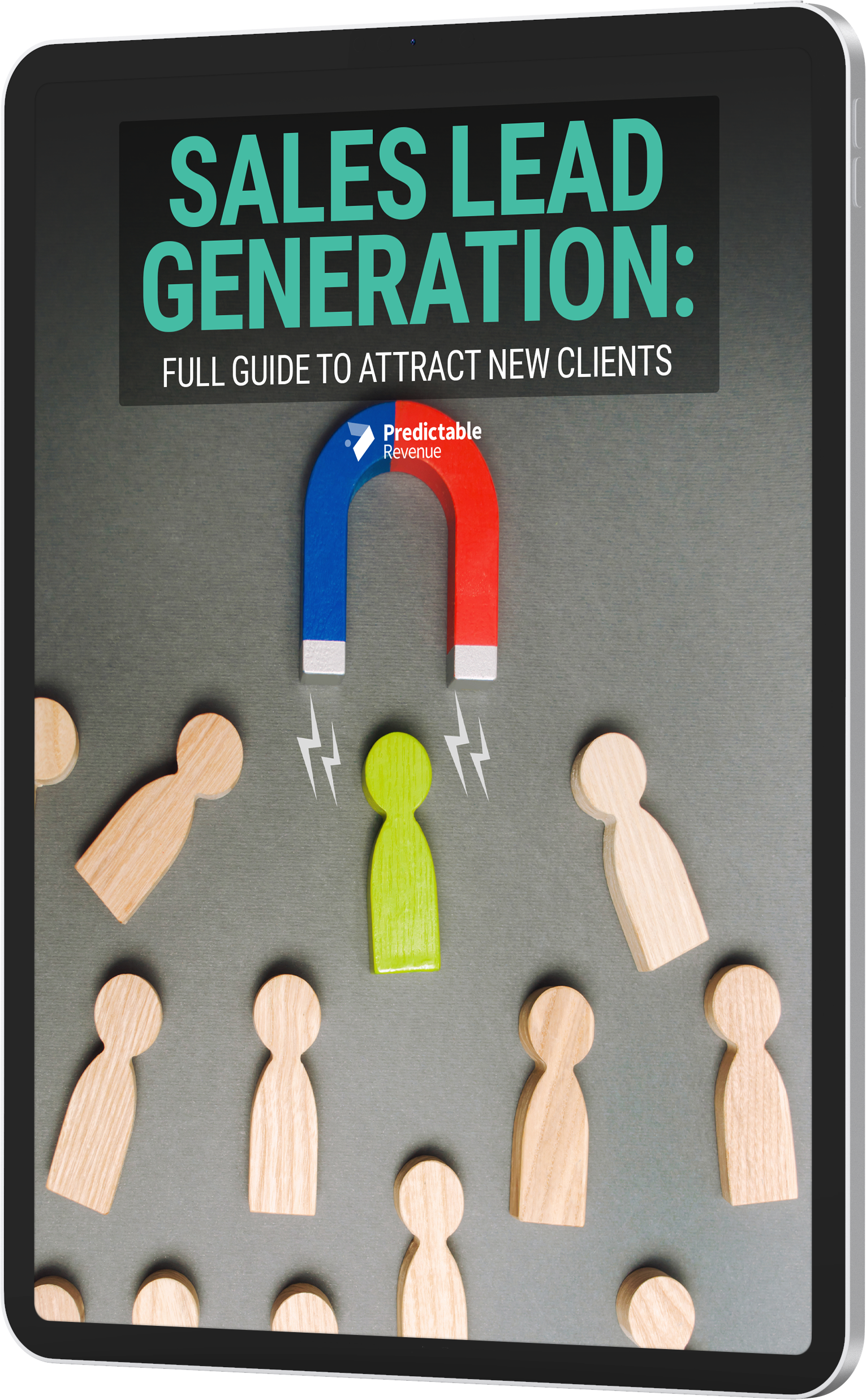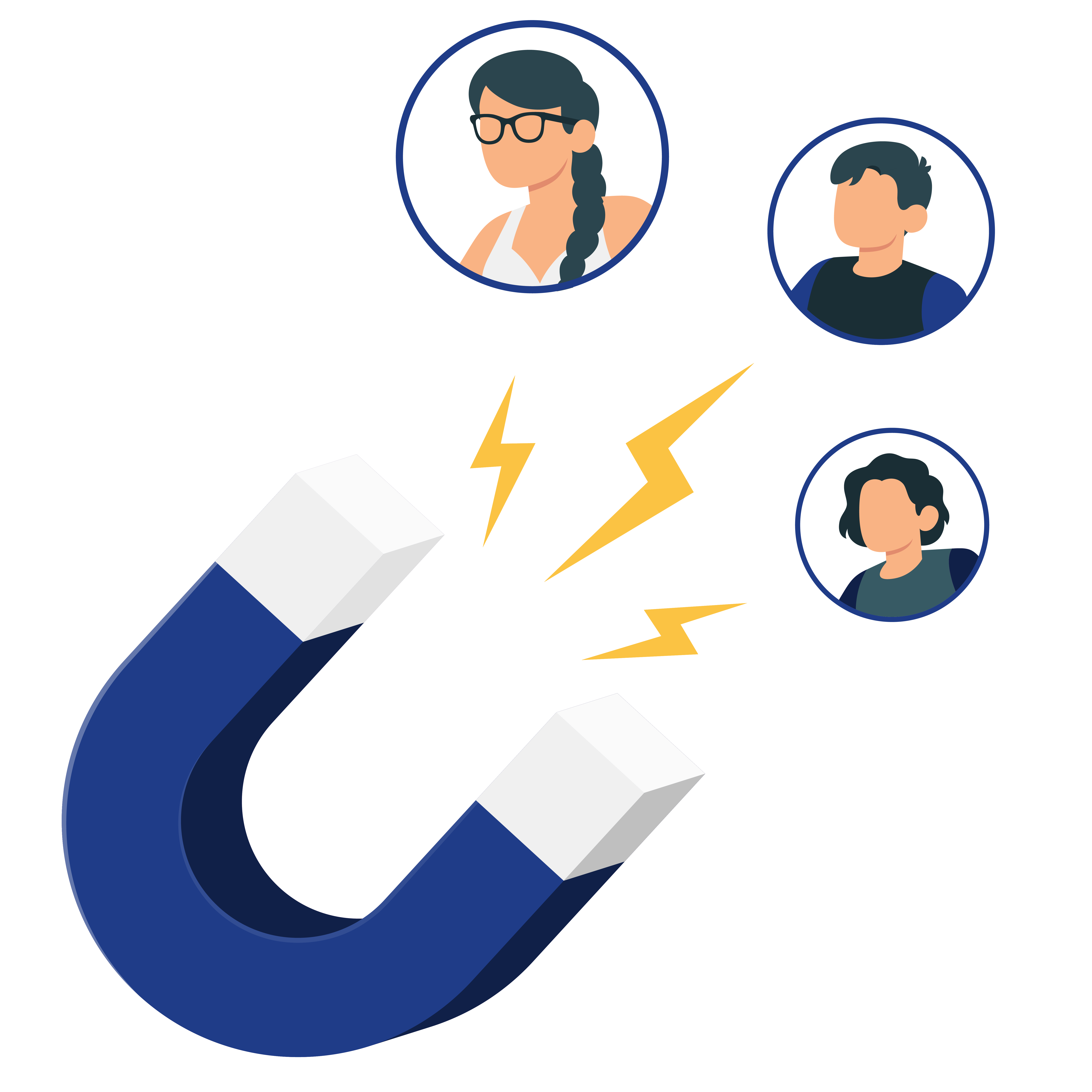
Lead generation is a crucial part of any B2B sales strategy, regardless of your business stage. If you want to grow your revenue, you need to attract more clients, and that all starts with generating more leads.
It’s simple math: the more leads you have in your pipeline, the more opportunities your sales team has to close a deal. Without new leads coming in the door, your customer base can quickly dry up.
In this ebook, you’ll learn why lead generation is so important, different strategies you can use to attract new clients, and how to build your lead generation process step-by-step. With a strong lead gen strategy in place, you’ll never run out of prospects to sell to.

GET YOUR FREE COPY!
EXCERPT
What is a lead?
A lead is a potential customer–anyone who may be interested in buying your product or service. There are different types of leads, including marketing qualified leads (MQLs), sales qualified leads (SQLs), and product or service qualified leads.
We’ll dive into how to qualify leads later on, but for now, think of a lead as someone who has raised their hand and indicated they might be interested in your product. They may have joined your company’s email list, signed up for a free webinar, or interacted with your content on social media.
All of this indicates that their interest as a potential customer, and therefore they become a lead.
Lead generation explained
Once a lead has shown interest, they enter the top of your funnel. This is the start of your relationship with a new potential customer.
It’s also the start of that lead’s customer journey, and your job now becomes to move that lead along the pipeline from initial contact to a long-term customer. To do so, you’ll need to spend time nurturing and warming up each lead before they’re ready to buy.
Many companies make the mistake of filling their top-of-funnel with as many leads as possible. While this is great in theory, your sales success also depends on the quality of those leads. Better quality leads will lead to much faster growth.
When a new lead enters the funnel, you will likely have very little information about them; they may or may not be a good fit for your product.
Once you begin actively working that lead (ie. initiate a conversation), you can dig for more information to determine whether they meet your ideal customer profile (ICP). If they do, then you’ll continue to nurture that relationship until they’re ready to buy.
When a lead becomes ready to buy, they’ve reached the “bottom” of the funnel and are now a sales-qualified lead (SQL). Your goal should be to create as many SQLs as possible.
Why you need a lead generation strategy
According to Marketo Engage, businesses with a well-developed lead generation process achieve 133% greater revenue. Lead generation keeps cash coming in the door. Without it, your pipeline could dry up at any time.
It’s easy for sales leaders to assume that lead generation belongs to marketing, but in fact, the best strategies require both functions to work together. This fosters greater collaboration and teamwork throughout the organization.
A strong lead generation strategy can also improve employee morale and productivity. Salespeople are much more likely to pick up the phone when they know the person they’re calling is already interested.
If the sales team has a consistent flow of leads, they can focus less on cold outreach and more on building relationships with the most qualified prospects.
Copyright © 2021 Predictable Revenue. All Rights Reserved.